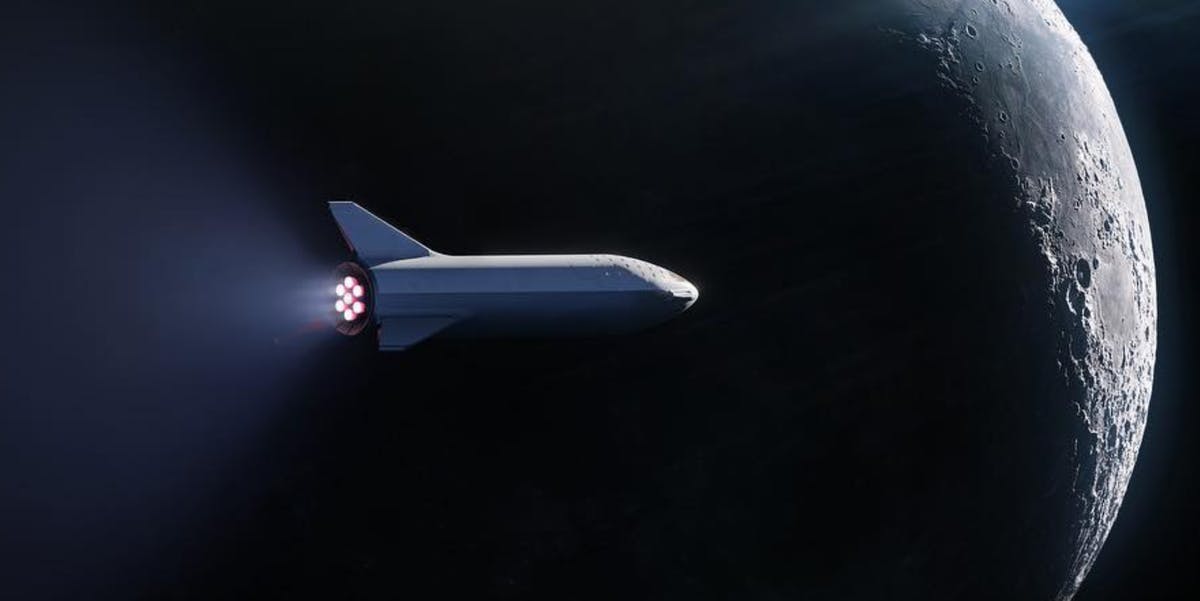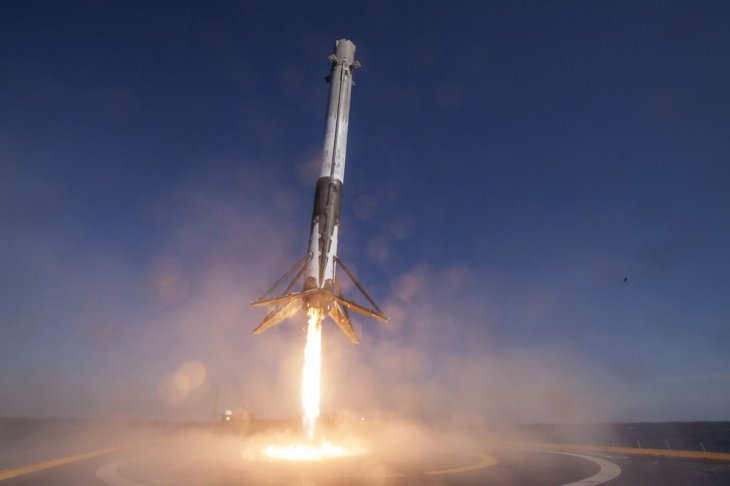SpaceX's Starship Designers Used Industrial Flamethrowers To Make Heat Shield
Viswamitra Jayavant - Mar 01, 2019

This creates a thin, cooling blanket that soothes the surface temperature of the shield to heighten its resistance to heat even further.
- SpaceX’s Starship Explosion: A Part Of Musk's Master Plan?
- Elon Musk Is Curing Blindness With Neuralink Blindsight!
- Elon Musk’s Optimus Robot: Will It Steal Your Job or Be Your Robot Wife by 2030?
Another Promising Year
For SpaceX and its multi-talent, billionaire boss Elon Musk, 2018 has been an eventful year worthy of being a significant milestone in their history. Progress to the company proves to not only be continuous but also historical and record-breaking.
With 21 launches under its belt in 2018 alone, one of which was the test flight of the most powerful operational rocket in the world Falcon Heavy. SpaceX broke the record for the most rocket ever to be launched by a commercial entity. The status of being the owner of the most capable and powerful, flight-proven rocket there is. But also the only rocket operator to ever land and re-use their rockets.

All in one year.
2019's First Order: Heat Shield
Now, it is time for them to flesh out the heat shield of the spacecraft. The component that will bear the brunt of the extreme heat Starship would suffer from during atmospheric re-entry. At this phase, the temperature can reach a maximum of 2,900 °C. Without the support of a heat shield, spacecraft can disintegrate and tear itself apart.
'Stainless steel sandwich' is how Musk called the component. It is naturally heat resistant, for stainless steel has a melting point of up to 1,500 °C. SpaceX’s engineers also adapt the cooling mechanism of rocket engines' nozzles to give the shield extra edge at combating the heat. Cool fuel and water are routed in-between the layers of the shield in a design known as ‘regenerative cooling’ to lower the temperature. Both of them are convenient and efficient cooling alternatives that negate completely the needs for special coolants on-board.
Perforations are also drilled into the shield so some of the liquid can ‘bleed’ out and plaster the scorching external surface with coolants. This creates a thin, cooling blanket that soothes the surface temperature of the shield to heighten its resistance to heat even further.

Practice
At least, that is the theory. On January 25th, SpaceX finally brought it out into practice.
Elon posted a 31 seconds video of the stress test of the shield. Using industrial-grade, real flamethrowers. They’re not quite joking around this time like the Boring Company’s ‘Not a Flamethrower’ story that made headlines for quite some time. Musk was asked by a Twitter user if the flamethrowers that were used borrowed from Boring Company’s inventory. To which he responded in an atypical Musk tone: “These are industrial strength, not recommended for use at home!”
Using the flamethrowers, they’re able to test the shield’s response to a blistering 1,100 °C. As expected, though the shield glowed red from the heat, it stood valiantly up to the challenge. Giving the company the go-ahead to put it into applicational use.
Setback
While the heat shield was a tick on the long checklist that leads to the final flight of Starship. We might not be able to see the shield installed onto the recently built prototype any time soon.
The constructed prototype, called ‘Starhopper’ to test the vehicle’s ability to take off and land autonomously and vertically is presently out of commission. During a bout of high winds in excess of 50 miles per hour battering the company’s ground on Texas. The winds managed to break the securing blocks which are responsible for keeping the vehicle upright. Expectedly, with the support removed, the rocket tipped over. The nosecone of the prototype was snapped, and the body of the rocket also suffered extensive damages.

Reparation is expected to take weeks. That's why despite the advancement on the heat shield’s front, they've taken a backward step on the whole vehicle altogether.
Featured Stories

Features - Jul 01, 2025
What Are The Fastest Passenger Vehicles Ever Created?

Features - Jun 25, 2025
Japan Hydrogen Breakthrough: Scientists Crack the Clean Energy Code with...

ICT News - Jun 25, 2025
AI Intimidation Tactics: CEOs Turn Flawed Technology Into Employee Fear Machine

Review - Jun 25, 2025
Windows 11 Problems: Is Microsoft's "Best" OS Actually Getting Worse?

Features - Jun 22, 2025
Telegram Founder Pavel Durov Plans to Split $14 Billion Fortune Among 106 Children

ICT News - Jun 22, 2025
Neuralink Telepathy Chip Enables Quadriplegic Rob Greiner to Control Games with...

Features - Jun 21, 2025
This Over $100 Bottle Has Nothing But Fresh Air Inside

Features - Jun 18, 2025
Best Mobile VPN Apps for Gaming 2025: Complete Guide

Features - Jun 18, 2025
A Math Formula Tells Us How Long Everything Will Live

Features - Jun 16, 2025
Comments
Sort by Newest | Popular